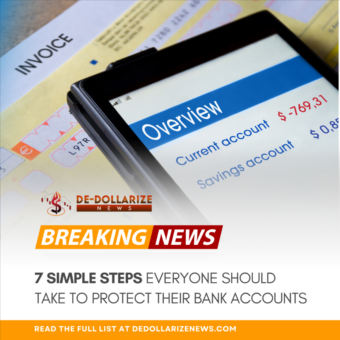
Are Depositors’ Funds Really “Safe” in U.S. Banks? The Digital-Security Gap You Shouldn’t Ignore
The Illusion of Safety: What FDIC Insurance Really Covers
FDIC insurance is a parachute for when the bank itself goes down in flames—up to $250,000 per depositor, per bank, per ownership category. That’s it. It does not protect you from cyberthieves, scams, or slick-talking fraudsters who get you to push “Send” on a transfer. The idea that your money is unconditionally safe? That’s the marketing brochure talking.
The Rules Are Rigged—And They’re Not in Your Favor
Sure, under Regulation E, banks have to reimburse you if some crook moves your money without your permission. That’s “unauthorized.” But if you authorized it—even under false pretenses—welcome to the world of “authorized push payment” (APP) scams, where U.S. law basically says, “Too bad, so sad.” Across the pond in the U.K., they’re forcing broader reimbursements. Here? It’s bank-by-bank policy, and you can guess how often that works out for you.
The Cybercrime Curve Is Pointed Straight Up
FBI numbers for 2024 show a gut-punch: $16.6 billion in reported cybercrime losses, up 33% from the year before. And those are just the cases reported. Ransomware’s hitting critical infrastructure—including banks. Zelle scams are so common that Congress keeps wagging fingers about them, but enforcement is a joke. The CFPB tried to crack down in 2024, then dropped the case in 2025. Translation: policy is in limbo, and criminals are eating lunch on the courthouse steps.
How Banks Fail You Without “Failing”
Account Takeovers: Hackers get in using phishing, malware, SIM swaps, or stolen credentials from one of the countless data breaches. Under Reg E, the bank’s supposed to reimburse if it’s unauthorized, but expect delays, denials, and hoops to jump through.
APP Scams: You think you’re wiring money to your bank, a legitimate business, or your desperate nephew. You’re not. And the law won’t save you.
Third-Party Breaches: Your bank can have airtight security, but if a vendor screws up—like in the 2024 Evolve Bank breach or the Snowflake-linked mess that hit Santander and Truist—you’re collateral damage. Stolen data today is a golden ticket for fraud tomorrow.
Half-Baked Security Controls: FFIEC told banks years ago to use layered defenses, but some still think an easily phishable one-time passcode is enough. Spoiler: it’s not.
Not All Banks Are Created Equal
Some banks have a “make the customer whole” policy for gray-area cases. Others? They’ll fight you tooth and nail. Some deploy biometric authentication, behavioral analytics, and device fingerprinting. Others are still pretending SMS codes are cutting-edge. And some have vendor oversight so loose it’s basically an open invitation for supply-chain breaches.
The Rules That Matter (and the Holes You Can Drive a Truck Through)
- Reg E: Protects you from unauthorized transfers—but only if you report fast enough and can prove it.
- APP Scams: You’re on your own.
- FDIC: Bank failure protection only—fraud is your problem.
Your Survival Blueprint in the Digital Banking Wasteland
- Pick a bank with real consumer protection policies—ask them in writing about their scam reimbursement stance.
- Lock down authentication—ditch SMS MFA; use app-based prompts or security keys.
- Segment your funds—keep your spending account separate from where you park large sums.
- Treat P2P like cash—disable or limit Zelle/PayPal/Venmo access.
- Assume your data will leak—freeze credit, enable account-change alerts, rotate passwords after breaches.
- If hit, act fast—report immediately, save every scrap of evidence, and escalate with legal citations when the bank stonewalls.
Bottom Line
The bank lobby would love you to believe digital fraud is just bad luck. The truth? It’s systemic, it’s growing, and your chances of getting reimbursed depend on the kind of fraud, your timing, and whether your bank even cares. The FDIC isn’t coming to save you from a hacker halfway across the world—or from the “bank rep” who called you last night with a fake warning. In the digital banking age, your security is your problem—manage it now, or watch your balance vanish while the system shrugs.
📥 Take control before the system takes you down—download Seven Steps to Protect Yourself from Bank Failure by Bill Brocius now: Click Here











